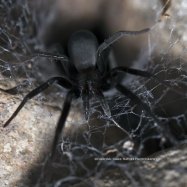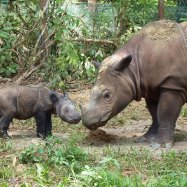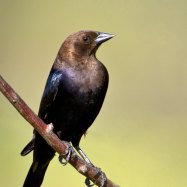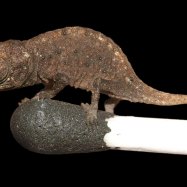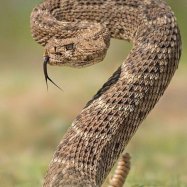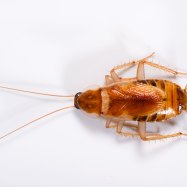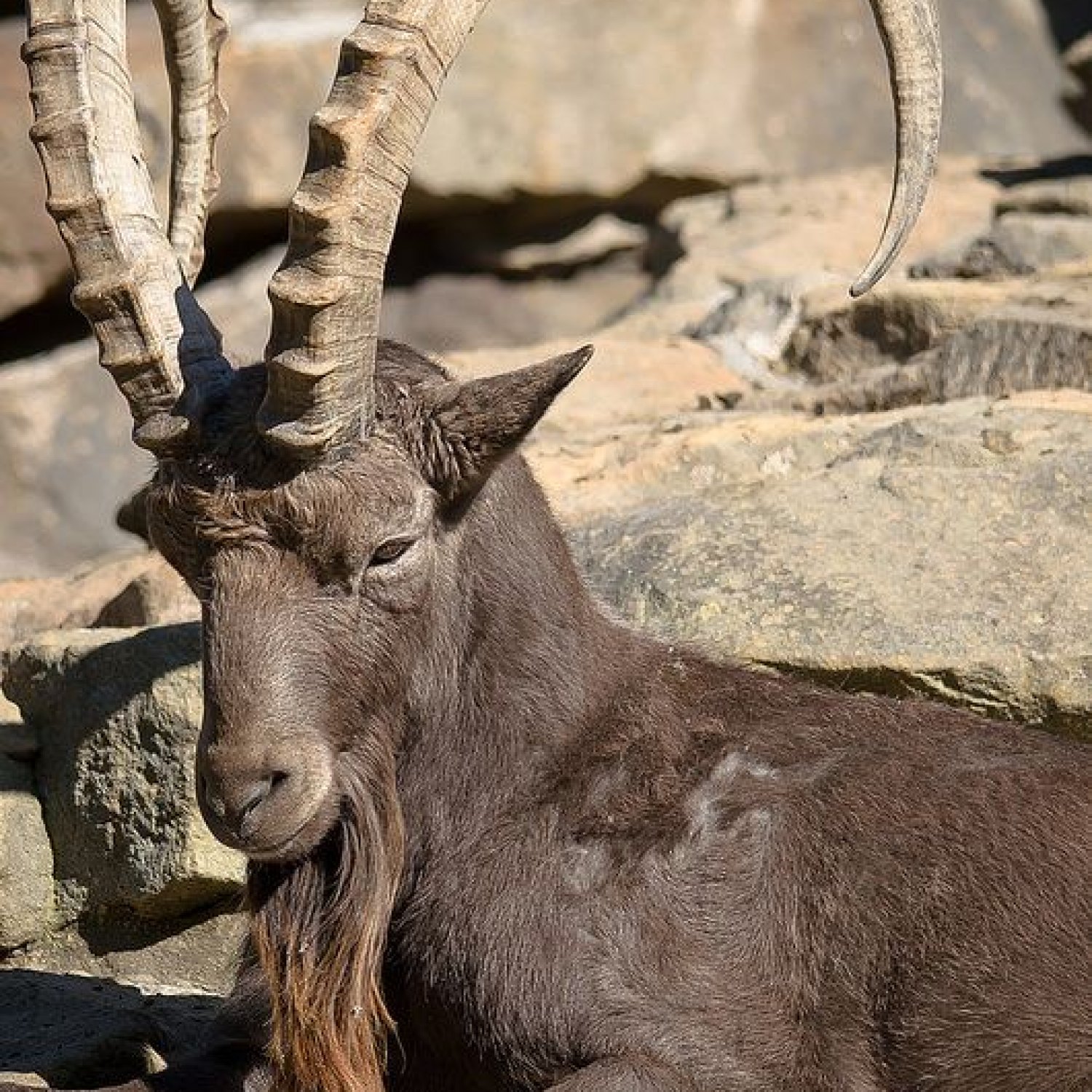
Siberian Ibex
The length of a Siberian Ibex ranges from 110 to 150 centimeters (43 to 59 inches).
The Siberian Ibex, a member of the Bovidae family, is a majestic animal found in the mountainous regions of central Asia. With a sturdy and muscular build and a length of 110-150 cm, these animals are well-adapted to their rugged environment. Spot this rare creature on your next adventure! #SiberianIbex #mountainanimals #wildlife
Animal Details Summary:
Common Name: Siberian Ibex
Kingdom: Animalia
Habitat: Siberian Ibex inhabit rugged and mountainous terrains including rocky cliffs, steep slopes, and grassy areas. They can be found at elevations ranging from 1,000 to 4,500 meters (3,300 to 14,800 feet) above sea level.
The Resilient and Mighty Siberian Ibex: Surviving in Rugged Terrain
Amidst the harsh and unforgiving landscape of central Asia lies a creature that is as tough as the rugged terrain it calls home. The Siberian Ibex, also known by its scientific name Capra sibirica, is a resilient species that has adapted to survive in some of the most extreme conditions on Earth.Belonging to the Animalia kingdom, Chordata phylum, Mammalia class, Artiodactyla order, and Bovidae family, the Siberian Ibex has carved out a niche for itself in the mountainous regions of central Asia. Let us delve deeper into the fascinating world of this magnificent creature and discover what makes it stand out in the animal kingdom Siberian Ibex.
The Habitat and Geographical Distribution of Siberian Ibex
The Siberian Ibex is primarily found in rugged and mountainous terrains, including rocky cliffs, steep slopes, and grassy areas. It is a highly adaptable species that can thrive in elevations ranging from 1,000 to 4,500 meters (3,300 to 14,800 feet) above sea level.Native to central Asia, the Siberian Ibex has a wide geographical distribution that includes countries such as Kazakhstan, Kyrgyzstan, Uzbekistan, Tajikistan, western China, Mongolia, and Russia. Within these countries, they can be found in the Altai, Tian Shan, and Sayan Mountains. They are well-suited to survive in these harsh and diverse environments, making them a truly remarkable species.
The Feeding Method and Diet of Siberian Ibex
As herbivorous animals, Siberian Ibex mainly feed on grasses, herbs, shrubs, and lichens. They are able to survive in their rocky habitat because they are excellent climbers. Their hooves have a rubbery texture that provides them with a better grip on the rocks, making it easier for them to navigate steep and treacherous slopes.Feeding primarily during early morning and late afternoon, the Siberian Ibex is well-adapted to conserve energy and avoid exposure to high temperatures Smokybrown Cockroach. They have also developed a unique feeding behavior that allows them to stand on their hind legs and reach for food that is higher up in the mountains. This behavior has earned them the nickname of “cliff dwellers.”
The Country of Origin and Location of Siberian Ibex
As mentioned earlier, the Siberian Ibex is native to several countries in central Asia, making it a truly remarkable and widespread species. They are found in remote and rugged locations, making it challenging to track their exact population size. However, conservation efforts have been made to protect and study these animals, especially in countries like Mongolia and Russia.Their geographic location and habitat make it difficult to study their behavior and breeding patterns, but scientists are continually working to learn more about these majestic creatures.
The Unique Coloration and Body Shape of Siberian Ibex
Siberian Ibex have a distinct appearance that sets them apart from other animals. Their coat coloration varies depending on the season and individual. In general, they have a light brown or tan coat with a lighter underbelly. During the winter months, their fur becomes thicker and longer, often turning into a gray or darker color to help them blend in with their surroundings.Apart from their unique coloration, Siberian Ibex also have a sturdy and muscular build. They have strong legs and a stocky body, allowing them to navigate their rocky habitat with ease. A short tail completes their robust and well-proportioned body.
Size and Length of Siberian Ibex
The size and length of a Siberian Ibex vary depending on their gender, with male ibexes being larger and heavier than females. On average, a male Siberian Ibex can weigh up to 80-130 kilograms (180-290 pounds), while females weigh around 50-60 kilograms (110-130 pounds).The length of a Siberian Ibex ranges from 110 to 150 centimeters (43 to 59 inches), with males being slightly longer than females. Their horns also add to their overall length, with males having longer horns than females.
The Mighty Horns of Siberian Ibex
One of the most interesting features of the Siberian Ibex is their impressive horns, which can reach up to 100 centimeters (40 inches) in length. Both males and females have horns, but those of the males are larger and more robust.For males, these horns are a sign of strength and dominance, often used in battles for breeding rights with other males. In contrast, female ibexes primarily use their horns for defense against predators, protecting their young, and maintaining social hierarchies within their herd.
Threats Facing the Siberian Ibex
Despite being well-adapted to survive in their harsh habitat, the Siberian Ibex faces several threats in the wild. One of the significant concerns is hunting, both for their meat, horns, and medicinal purposes. Due to their elusive nature and remote location, it is difficult to regulate and control hunting. As a result, their population has declined significantly in some areas.In addition, climate change and habitat destruction also pose a threat to the survival of the Siberian Ibex. As temperatures rise and habitats are disturbed, these animals face challenges in finding suitable food sources and adapting to changing conditions.
Conservation Efforts for Siberian Ibex
To ensure the survival of this magnificent species, conservation efforts have been implemented by various organizations and governments in countries where they are found. Protected areas have been established, and education and awareness programs have been conducted to promote the conservation of the Siberian Ibex.In some areas, hunting has been restricted and regulated, allowing the ibex population to grow and thrive. Additionally, climate change mitigation strategies and habitat restoration projects are also being undertaken to protect the environment and ensure the survival of this remarkable creature.
In Conclusion
In conclusion, the Siberian Ibex is a remarkable species that has adapted to survive in some of the harshest conditions on Earth. Found in the mountainous regions of central Asia, these animals have a wide geographical distribution and are well-suited to thrive in rocky and rugged habitats.With their distinct coloration, sturdy build, and impressive horns, the Siberian Ibex is a sight to behold. However, they face several threats, including hunting and habitat destruction. To ensure their survival, conservation efforts are underway, and it is essential to continue raising awareness and promoting sustainable practices to protect this resilient species.

Siberian Ibex
Animal Details Siberian Ibex - Scientific Name: Capra sibirica
- Category: Animals S
- Scientific Name: Capra sibirica
- Common Name: Siberian Ibex
- Kingdom: Animalia
- Phylum: Chordata
- Class: Mammalia
- Order: Artiodactyla
- Family: Bovidae
- Habitat: Siberian Ibex inhabit rugged and mountainous terrains including rocky cliffs, steep slopes, and grassy areas. They can be found at elevations ranging from 1,000 to 4,500 meters (3,300 to 14,800 feet) above sea level.
- Feeding Method: Herbivorous
- Geographical Distribution: Siberian Ibex are native to central Asia and can be found in the Altai, Tian Shan, and Sayan Mountains. They have a wide distribution that includes Kazakhstan, Kyrgyzstan, Uzbekistan, Tajikistan, western China, Mongolia, and Russia.
- Country of Origin: Siberian Ibex are indigenous to several countries in central Asia, including Kazakhstan, Kyrgyzstan, Uzbekistan, Tajikistan, Mongolia, and Russia.
- Location: Siberian Ibex can be found in mountainous regions of central Asia.
- Animal Coloration: The coloration of Siberian Ibex varies depending on the season and the individual. In general, they have a light brown or tan coat with a lighter underbelly. During the winter, their fur becomes thicker and longer, and some individuals may have a gray or darker coat.
- Body Shape: Siberian Ibex have a sturdy and muscular build with strong legs. They have a stocky body and a short tail.
- Length: The length of a Siberian Ibex ranges from 110 to 150 centimeters (43 to 59 inches).
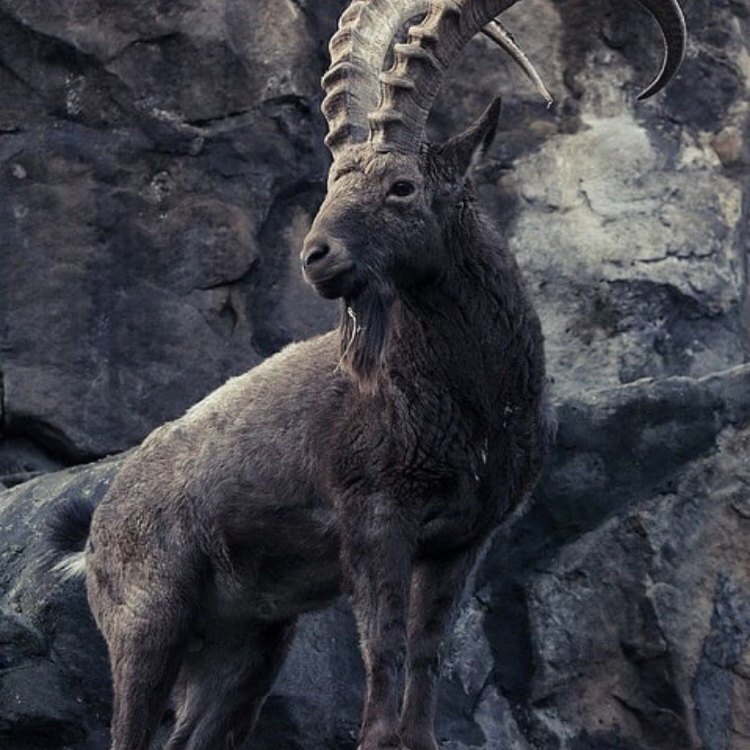
Siberian Ibex
- Adult Size: Adult Siberian Ibex typically weigh between 60 to 130 kilograms (130 to 290 pounds). Males are generally larger than females.
- Average Lifespan: Siberian Ibex have an average lifespan of about 16 to 17 years in the wild.
- Reproduction: Siberian Ibex reproduce sexually through internal fertilization.
- Reproductive Behavior: During the mating season, known as the rut, males compete for dominance by butting heads and displaying aggressive behaviors. The dominant male breeds with multiple females in his territory.
- Sound or Call: Siberian Ibex communicate using vocalizations such as bleats and barks.
- Migration Pattern: Siberian Ibex are not known for long-distance migrations. However, they may move to lower elevations during the winter in search of food.
- Social Groups: Siberian Ibex live in small herds that consist of females and their young, with one dominant male. Outside of the breeding season, males often form bachelor groups.
- Behavior: Siberian Ibex are agile climbers and spend a significant amount of time on rocky cliffs and steep slopes. They are diurnal animals, being most active during the day.
- Threats: The main threats to Siberian Ibex include habitat loss due to human activities, hunting for meat and trophies, and competition for resources with livestock.
- Conservation Status: The conservation status of Siberian Ibex is currently listed as Least Concern by the International Union for Conservation of Nature (IUCN). However, some subpopulations are declining, and localized extinctions have occurred.
- Impact on Ecosystem: Siberian Ibex play a role in their ecosystem as herbivores, helping to maintain the balance of plant populations.
- Human Use: Siberian Ibex are hunted for their meat, hide, and horns. They are also sometimes kept in zoos and wildlife parks for conservation and educational purposes.
- Distinctive Features: Siberian Ibex have long, curved horns that grow upwards and backwards from the forehead. Both males and females have horns, although those of males are generally larger.
- Interesting Facts: 1. Siberian Ibex have a specialized foot structure that allows them to navigate steep and rocky terrain with ease. 2. They are excellent climbers and can scale almost vertical cliffs. 3. Siberian Ibex have a distinctive beard on their chin, which is more prominent in males. 4. They have a keen sense of hearing and sight, which helps them detect predators. 5. During the winter months, Siberian Ibex may migrate to lower elevations in search of food.
- Predator: The main predators of Siberian Ibex include wolves, snow leopards, lynx, and golden eagles.
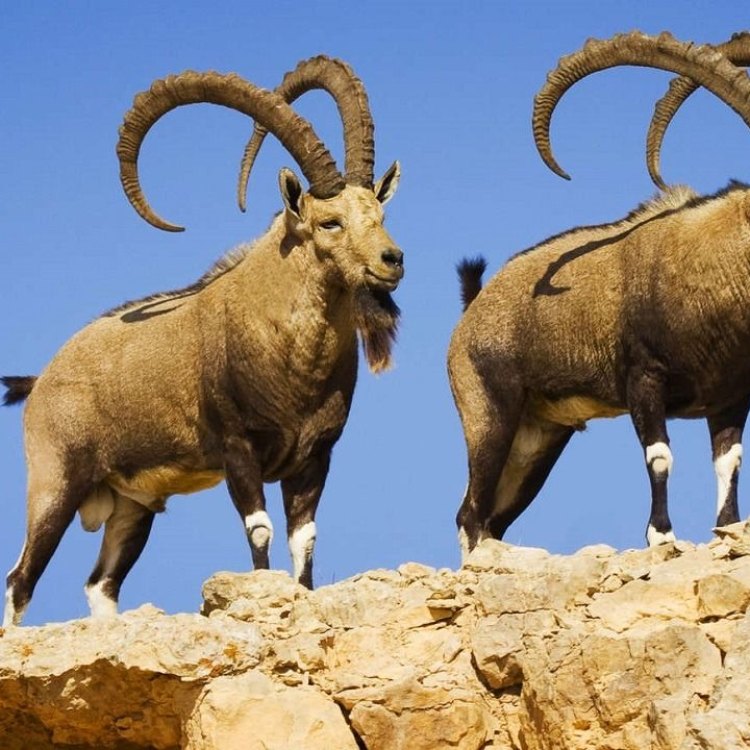
Capra sibirica
The Mighty Siberian Ibex: An Agile Climber with Distinctive Features
With its elegant appearance and powerful stature, the Siberian Ibex (Capra sibirica) is a fascinating species that roams the rugged and harsh terrain of Central and East Asia. This wild goat species is known for its impressive climbing skills, distinctive horns, and important role in its ecosystem. In this article, we will delve deeper into the unique features of the Siberian Ibex and how they contribute to their survival and conservation.Adult Size and Average Lifespan
On average, adult Siberian Ibex weigh between 60 to 130 kilograms (130 to 290 pounds) PeaceOfAnimals.Com. However, males are generally larger than females, with some reaching up to 150 kilograms (330 pounds). Their size and weight make them well-adapted to living in high-altitude environments with extreme weather conditions.
In the wild, Siberian Ibex have an average lifespan of about 16 to 17 years. However, in captivity, they can live up to 20 years due to the availability of proper care and food.
Reproduction and Reproductive Behavior
Like most mammals, Siberian Ibex reproduce sexually through internal fertilization. During the mating season, known as the rut, which usually occurs from November to December, males compete for dominance by butting heads and displaying aggressive behaviors. The dominant male breeds with multiple females in his territory, ensuring the survival of their species.
Sound or Call
Siberian Ibex communicate using vocalizations such as bleats and barks. These sounds are used for social interactions and to warn and alert others of potential danger Southeastern Blueberry Bee. These vocalizations may also help establish dominance within their social group, particularly during the mating season.
Migration Pattern and Social Groups
Siberian Ibex are not known for long-distance migrations. However, they may move to lower elevations during the winter in search of food. This behavior is known as altitudinal migration and is common among mountain-dwelling species.
These majestic creatures live in small herds that consist of females and their young, with one dominant male. Outside of the breeding season, males often form bachelor groups. This social structure helps them survive in their harsh environment, where resources are scarce.
Behavior and Threats
Siberian Ibex are agile climbers and spend a significant amount of time on rocky cliffs and steep slopes. Their specially adapted foot structure allows them to navigate these terrains with ease, even scaling almost vertical cliffs. They are also diurnal animals, being most active during the day, and spend the night in caves or rock crevices.
Despite being well-adapted to their environment, Siberian Ibex face a variety of threats. The main threats include habitat loss due to human activities, such as mining and agriculture, hunting for meat and trophies, and competition for resources with livestock. These factors have led to localized extinctions in some areas, primarily due to overhunting.
Conservation Status and Impact on Ecosystem
The conservation status of Siberian Ibex is currently listed as Least Concern by the International Union for Conservation of Nature (IUCN). However, some subpopulations are declining, and localized extinctions have occurred, primarily due to human activities. To help conserve this species, the governments of countries where they reside, such as Russia, Kazakhstan, and Mongolia, have implemented conservation programs to protect their habitat and regulate hunting.
Siberian Ibex play a crucial role in their ecosystem as herbivores. They help maintain the balance of plant populations by consuming various vegetation, thus contributing to the diversity of plant life in their environment. They also serve as a food source for their predators, playing an essential role in their ecosystem's delicate balance.
Human Use and Distinctive Features
Siberian Ibex have been hunted for centuries for their meat, hide, and horns. In some cultures, their horns are used in traditional medicine, while in others, they are used for ornamental purposes, such as making keepsakes and jewelry. Unfortunately, this has led to a decline in their population and made them vulnerable to extinction.
One of the most distinctive features of Siberian Ibex is their long, curved horns that grow upwards and backwards from the forehead. Both males and females have horns, although those of males are generally larger. These horns are used for defense against predators, as well as for competing for dominance during the mating season.
Interesting Facts About Siberian Ibex
Apart from their impressive climbing skills and distinctive features, Siberian Ibex have several interesting facts that make them a truly remarkable species.
1. Siberian Ibex have a specialized foot structure that allows them to navigate steep and rocky terrain with ease. Their hooves have a rough, rubbery texture and a flexible joint that helps them grip onto rocky surfaces.
2. They are excellent climbers and can scale almost vertical cliffs with ease. They have been observed jumping up to 2 meters (6.5 feet) in height and 5 meters (16 feet) in distance.
3. Siberian Ibex have a distinctive beard on their chin, which is more prominent in males. However, females may also develop this feature as they age.
4. They have a keen sense of hearing and sight, which helps them detect predators, such as wolves, snow leopards, lynx, and golden eagles, from a distance.
5. During the winter months, Siberian Ibex may migrate to lower elevations in search of food. This behavior helps them survive the harsh winter conditions and is essential for their survival.
In conclusion, the Siberian Ibex is a magnificent species that has captured the attention of many due to its extraordinary features. With their impressive climbing skills, unique horns, and role in their ecosystem, they truly are a species worth protecting. Let us hope that through conservation efforts and responsible human interactions, this wild goat species will continue to thrive in its natural environment for many generations to come.

The Resilient and Mighty Siberian Ibex: Surviving in Rugged Terrain
Disclaimer: The content provided is for informational purposes only. We cannot guarantee the accuracy of the information on this page 100%. All information provided here may change without prior notice.

